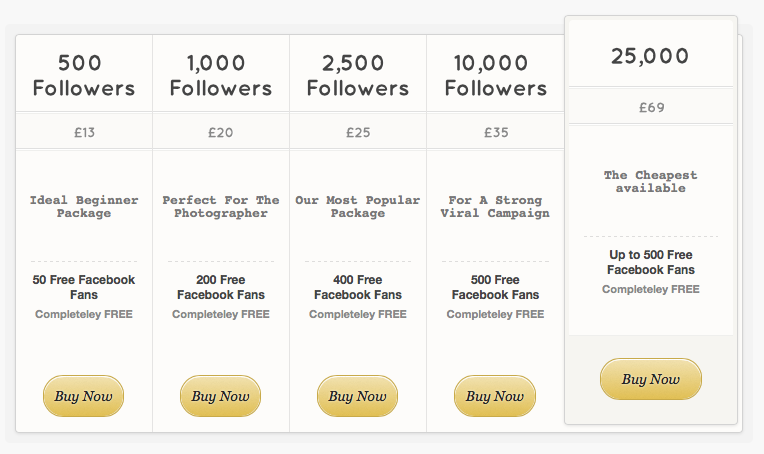Paid Likes, Fraudulent Friends and Fake Followers
Judging the value of an impression in the digital era.
By Dorn Martell
As you may have suspected, a large proportion of Justin Bieber’s followers are fake. I’m not judging their taste in music or fashion, I’m just stating the facts. According to StatusPeople.com, more than 36% of Bieber’s followers are bots. At a time when human trafficking is in the headlines, non-human traffic is a dirty little secret that those who live and die for metrics don’t necessarily want you to know.
The digital and social space is a must for every client and we buy the best on-line media available, but one of the biggest challenges facing advertisers today is judging the effectiveness of their campaigns. There are a lot of digital companies making huge promises that everything can be accurately tracked. Many companies want you to judge your ads and social media efforts based on the number of clicks, likes, followers and views. But, how legitimate is this and how is it being “gamed”?
Pay me and I’ll be your friend.
In real life, you know that true friends cannot be bought. If someone likes you because of your money, your car or your connections, it soon becomes apparent that they really don’t care about you. But in the wild west of social media, it’s all too common.
Facebook estimates that there are 76 million fake users out there “liking” and “friending” like there’s no tomorrow. I have seen a dramatic increase in odd friend requests from “people” with nothing in common with me and no content on their profile other than a picture and a “joined Facebook” date. I’ve also received numerous messages from “girls” that write in broken English and want to be more than friends. Only a robot or a con artist would start a message with “Hello Dear I would like much to be your good friend.”

The nature of Twitter makes controlling legions of followers even easier. If you want your own army of followers you can buy them from sites like buyfollowerstwitter.co.uk. According to the Wall Street Journal, an entrepreneur named Jim Vidmar is selling his 10,000 plus Twitter bots to aspiring rappers to make them “trend” and gain publicity. Harmless enough for entertainers, but these bots can actually affect world politics. It is believed that an army of Russian bots is hard at work countering any anti-Kremlin sentiment. But most clients will never know if the campaign they paid for generated true potential customers or if all those clicks and likes were generated by machines and fake people.
The 800-pound gorilla named Google blocks nearly 10 percent of traffic flowing through their ad exchange because it is non-human traffic. Like customs, if they catch that much just imagine how much they don’t catch.
How do you judge the value of an impression?
It would be simple if the quantitative model of clicks, likes and followers were the “clean transaction” that the digitelegencia would like you to believe they are. But over-valued impressions are not a new problem. Nielson ratings have tried to put science in consumers viewing habits for years. But the accuracy of the audience’s engagement has never been accurately reflected in voluntary or automated systems that quantify viewership. Magazine subscription numbers have always been gamed as well. You can find stacks of a prominent South Florida magazine (named after a street), sitting on that street and all of these mags are counted as impressions when the Client asks, “How many people saw my ad?” But new media has really taken the over-rating of impressions to a whole new level. One savvy client of ours nailed it in a meeting with a web cam provider when he said, “I don’t care how many views the camera generated! If a million boys in China are watching this web cam and don’t have the money to stay at my resort, it’s worth nothing.”
#IwantAFreeLuxuryVacation
One of the biggest ways to generate engagement in new media is to give stuff away to generate friends, followers and clicks. But this model may even be counterproductive. Another client cited a much-hyped social media campaign that incentivized people to like or re-tweet messages for a chance to win a weekend in a luxury villa. It generated thousands of new friends and followers but didn’t sell a single night in the villa. For luxury brands, generating armies of followers without the means to afford the product is costly as well as pointless.
Maintain Hope. Manage Expectations.
It’s great if your campaign went viral. It’s wonderful if you have thousands of friends and followers. But the secret in creating brands with lasting value is to create desire among your target audience. It’s much better to impress a few qualified buyers than masses of “tire kickers”. Don’t fall for immediate gratification. A thoughtful commercial may touch the heart of your true customer but the effect may not be a click-through within seconds of seeing your message. If your customer says, “That’s a place I’d like to go someday.” Then your message did its job. Clients must adjust the expectations for their Key Performance Indicators. If everything is judged by clicks, likes and follows you may be knee deep in bad data. Requests for more information and visits to showrooms are certainly more tangible, but nothing beats sales, booking room nights, etc. And in the long run a high average daily room rate or selling to a better customer who spends more on merchandise with a higher margin is a better bet than short term stats that look impressive in a graph, but do little to contribute to the bottom line.
So, be patient, do good thoughtful work and watch the results build over time. After all, your customers are persons who think before they act, not mindless robots.

